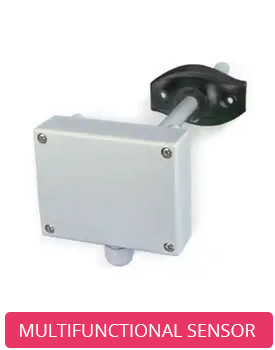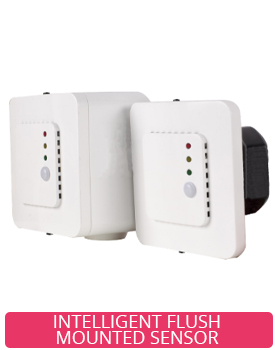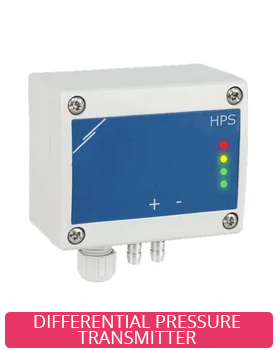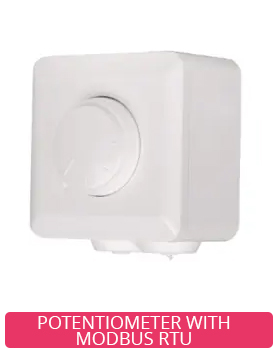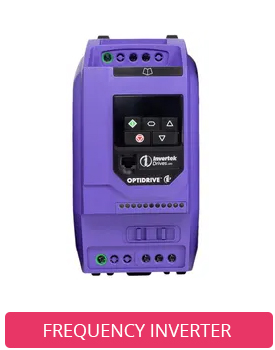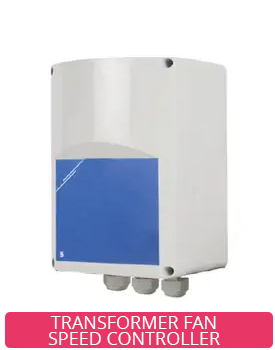Blog
Download our brochure

Stay informed
In today's buildings, indoor air quality (IAQ) is more important than ever. From offices to industrial facilities, ensuring clean, fresh air is vital for both health and productivity. With the rise of smart HVAC technologies, optimizing air quality has become easier and more efficient. Modern control solutions not only enhance air quality but also offer energy-saving benefits, driving operational costs down while keeping environments comfortable and healthy. In this article, we will explore how Goveco’s cutting-edge products and smart HVAC control systems can transform air quality management.
How sensors drive smarter HVAC systems
Sensors are the key to any effective smart HVAC system. Without accurate, real-time data from strategically placed sensors, your ventilation system cannot properly adjust to changing environmental conditions. Goveco offers a comprehensive range of sensor-based control solutions designed to meet the unique demands of various indoor environments.
- Temperature Sensors: Products like the Sentera Temperature Sensors ensure precise temperature control, maintaining comfort and reducing energy waste.
- CO2 Sensors: In spaces with fluctuating occupancy, such as conference rooms or open-plan offices, the CO2 detectors continuously measure carbon dioxide levels, triggering the HVAC system to introduce fresh air when needed. This boosts IAQ and prevents the build-up of pollutants.
- Humidity and Air Quality Sensors: High humidity can foster mold growth, while dry air can cause discomfort. Humidity sensors work in tandem with HVAC systems to maintain optimal moisture levels, while air quality sensors monitor pollutants like VOCs (volatile organic compounds).
Smart integration of these sensors allows for continuous real-time adjustments, ensuring that your indoor environment remains within healthy parameters at all times. Goveco offers the complete range of sensor types for both wall and duct mounted applications.
Advanced control solutions: Efficiency meets performance
In HVAC systems, fans play a crucial role in moving air to maintain temperature and humidity control. Speed controllers not only regulate fan speed but also interact with sensors to optimize system performance. By receiving data from sensors, such as temperature, humidity, and pressure, controllers can adjust fan speed in real-time to meet specific requirements.
Two common types of speed controllers for fans in HVAC systems are transformer speed controllers and frequency inverter speed controllers.
- Transformer Speed Controllers operate by altering the voltage supplied to the fan motor. This is typically achieved through a series of taps on a transformer. By selecting different taps, the voltage can be adjusted, resulting in a corresponding change in fan speed. Transformer fan speed controllers are considered a simple and cost-effective speed controller option
- Potentiometers are variable resistors that can be adjusted manually or remotely using communication protocols. This allows for centralized control and monitoring of fan speeds within a building management system (BMS). Modbus controlled potentiometers offer more flexibility and integration capabilities compared to traditional manual potentiometers.
- Frequency Inverter Speed Controllers offer more advanced control capabilities. They work by varying the frequency of the power supplied to the fan motor. By increasing or decreasing the frequency, the motor's rotational speed can be adjusted smoothly and precisely. Frequency inverters provide superior energy efficiency, noise reduction, and improved system performance compared to transformer speed controllers.
Communication protocols: The common language between system components
Building Management Systems (BMS) rely heavily on effective communication between various components, from sensors and actuators to controllers and central systems. Communication protocols serve as the language that facilitates this interaction, ensuring data integrity, reliability, and interoperability.
One of the most widely used protocols in BMS applications is Modbus RTU. Its popularity stems from several key advantages:
- Simplicity: Modbus RTU employs a straightforward and easy-to-understand protocol structure, making it accessible to developers and system integrators.
- Reliability: The protocol is designed for harsh industrial environments, ensuring robust data transmission and error detection.
- Interoperability: Modbus RTU is supported by a vast range of devices from different manufacturers, promoting interoperability and flexibility in system design.
- Cost-effectiveness: Due to its widespread adoption, Modbus RTU devices are often more affordable compared to those using proprietary protocols.
- Scalability: The protocol can handle a wide range of devices and data volumes, making it suitable for both small-scale and large-scale BMS installations.
Conclusion: Enhance air quality with Goveco's smart solutions
Optimizing indoor air quality doesn’t have to be a complicated process. With Goveco’s suite of smart HVAC control solutions, businesses can achieve cleaner, healthier indoor environments while also saving on energy costs. Whether it’s through advanced sensors or controllers, Goveco provides everything you need to create a balanced, efficient, and sustainable HVAC system. By investing in these solutions, you not only ensure the well-being of building occupants but also contribute to a greener, more energy-efficient future.

